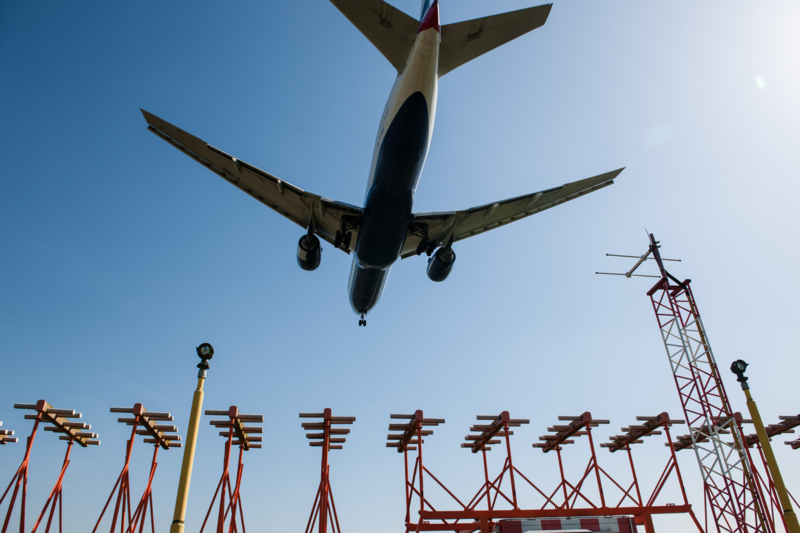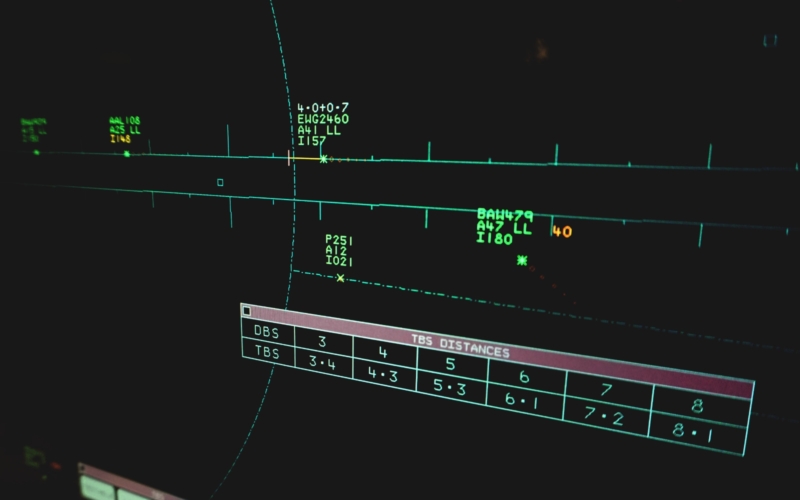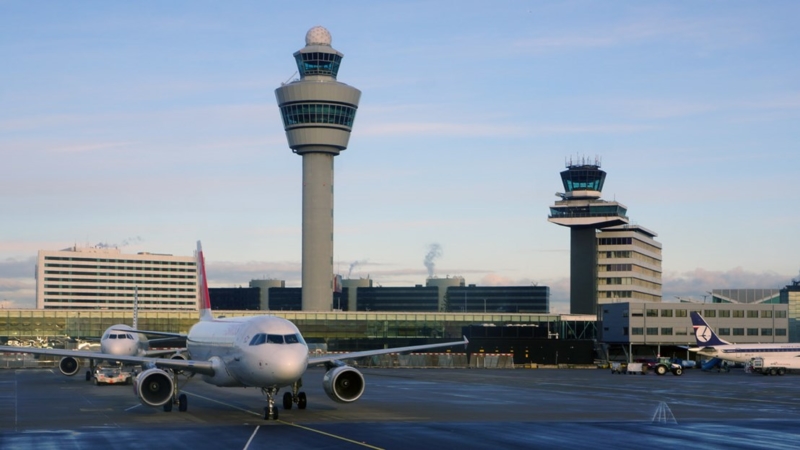Everything you wanted to know about Intelligent Approach…
11 August 2021With airports so impacted by the Covid crisis, being able to get the most out of existing assets – especially runways – is going to be so important over the coming years.
Tools like Intelligent Approach that help airports utilise runways and airspace more efficiently, for a fraction of the investment needed for new ground-based infrastructure, will be more valuable than ever to operators as traffic returns.
Intelligent Approach is a suite of tools we’ve developed with Leidos, that allow air traffic controllers to improve the consistency of spacing between arriving aircraft, thereby maximising runway efficiency. The software generates markers between arrivals based on the individual aircraft type and the type of aircraft in front, so controllers can more readily hit the optimum spacing. Those markers can be based on either time or distance-based intervals.
At Heathrow, the time-based separation element of Intelligent Approach is being used to dynamically calculate the optimum distance between arrivals based on both the aircraft type and live weather conditions. Since it was introduced in 2015, it has reduced headwind delays by 62% making the operation more resilient and reducing delay and CO2 emissions.
But Intelligent Approach is capable of so much more than just tackling headwind delays. As such, we’ve pulled together some of the most frequently asked questions about the tools and how they work…
Is the Time Based Separation (TBS) element of Intelligent Approach still applicable during extreme weather with poor visibility, under ILS operation, say a CAT II?
Intelligent Approach is operational in all weather conditions but under the most demanding Cat III conditions the spacing is driven more by the need to protect the ILS localiser beam than by wake vortex spacing. For example we typically go to 6 mile spacing in Cat III. That said we have developed the safety case for dynamic sensitive areas where we can use a landing clearance trigger line rather than a fixed Localiser Sensitive Area (LSA). This is based on the fact that not all aircraft have the same impact on the ILS localiser beam; so for example, with the new wide aperture localiser we can use a landing clearance trigger line for medium aircraft like A320/737 of 82m as opposed to the 137m which was the standard in the UK (other states use 150m).
Intelligent Approach knows the rules and hence can set up this variable spacing. This means that we can reduce gaps between arrivals dependent on the aircraft type and this can generate up to 30% reduction in delays due to low visibility. For Cat II conditions we typically apply standard TBS spacing.
Interestingly, at Heathrow the tower is 87m high so we also have another set of conditions where the airport is Cat I or better but the tower is in cloud so is no longer visual, under these conditions we switch to a minimum of 4nm spacing and the TBS tool automatically reflects this.
What impact can Intelligent Approach have to the airport on the terminal side?
Overall, it is a benefit; the airport runs closer to schedule with less disruption which means that the stand plan is less interrupted and helps maintain departure punctuality. The punctuality statistics for Heathrow have improved overall since TBS went live and, significantly, we no longer see cancellations due to disruption from headwinds. When we move to pairwise, or for mixed mode runways, Intelligent Approach can actually increase both the potential tactical and scheduled landing capacity at the airport in which case the new schedule would need to be planned by the airport in the normal manner.
How does Intelligent Approach impact the traveling public? Less delays?
Yes that is exactly it. Less delay, a more repeatable and resilient service and much less chance of flight cancellations due to headwinds. We have also seen a noticeable saving in airborne holding since the system went live and when combined with our cross border XMAN (arrival manager), which optimising the stream of arriving aircraft from 350nm, the combination helps to save over 31,900 tonnes of carbon dioxide a year at Heathrow.

Can you explain in more detail how you download wind speed from aircraft?
We have developed software called the Glideslope Wind Conditions Service, which downloads data from the aircraft via Mode S Radar to calculate the headwind component in real-time. These parameters are part of the standard Mode S DAPs (Downlinked Aircraft Parameters) so there is no change required on the aircraft to enable this service to operate.
We receive updates from every aircraft flying down the final approach every 4-6 seconds and use this to create a headwind component that the Intelligent Approach tool will use to calculate the optimum spacing. As the wind conditions change the headwind component is dynamically updated. The software includes error checking using a range of parameters and we trialled the algorithms over 12 months before TBS went live. We discovered high levels of accuracy that are far better than you could hope to get from ground-based measurements or met forecasts.
How do the benefits realised from Time Based Separation compare to the Capex and Opex costs?
Dependent on the specifics for the airport but certainly for busier airports we would expect the investment to show a pay back in less than a year from the start of operations. The cost is significantly less than new ground infrastructure.
What happens in cases of tailwind? Does the TBS system revert to distance separations?”
The system calculates the headwind component along the final approach in real time and applies the appropriate separation for the prevailing wind conditions. That means that in tailwind conditions the separation is slightly increased as under these conditions wake vortex risk is higher than in headwinds. This does not result in a loss of capacity versus light headwinds as the groundspeed is higher with a tailwind but our experience of a circa 30% reduction in the number of Wake encounter Reports since TBS went live has probably been helped by this feature of the tool.
How can the Tower and Airport share information to optimise runway capacity?
The solution to optimizing runway capacity, other than through expensive infrastructure changes, is through the use of supporting tools such as Intelligent Approach, but for these tools to be effective critical information must be openly shared between everyone involved. The need for an AODB (Airport Operational Database) which can be the repository for all required data and that can be accessed by all parties is key along with an ACDM program to utilise the data. Intelligent Approach is totally system agnostic and has been specifically designed to work with current ATM platforms including A/DMAN through standard message sets and will deliver standard data to an end user for analysis and display.

Is Intelligent Approach an alternative to an airport building a new runway?
The issue is that new runways wherever they are built take a long time to get approved and built, and cost a lot of money (something the industry just doesn’t have at the moment) and in the mean-time the airports need to find a way to maintain operational resilience and cope with increasing passenger demand. The advantage of the Intelligent Approach is that it is not dependent on those kinds of infrastructure decisions, does not change the flight path of the aircraft so does not require environmental consultation and it can be implemented quickly.
How does the system cope with situational awareness for incidents or events affecting the airport operations, such as an aircraft stuck on the taxiway
You can tell the system that you need a longer gap on approach to deal with an issue (e.g. give me a 10 mile gap for a runway inspection). The real benefit in disruption such as a closed runway is that for a multi runway airport the capacity will be higher on the remaining runways mitigating the effect and for a single runway airport, once the runway is cleared the capacity will be higher with Intelligent Approach allowing a faster recovery.
With reference to the rise of Digital Towers and the use of Artificial Intelligence, for more accurate prediction of individual aircraft landing times, isn’t it worth bringing forward Intelligent Approach innovations to mixed-mode runway operations?
The benefits for mixed mode runways are clear. Even for a runway that is scheduled to the maximum on current wake vortex and inter arrival spacing, we believe that there is still 6 to 8% more capacity available. Intelligent Approach gives greater accuracy, bespoke spacing according to the aircraft pairs of departure and arrival and of course resilience in unfavourable weather.
Comments
Please respect our commenting policy and guidelines when posting on this website.



